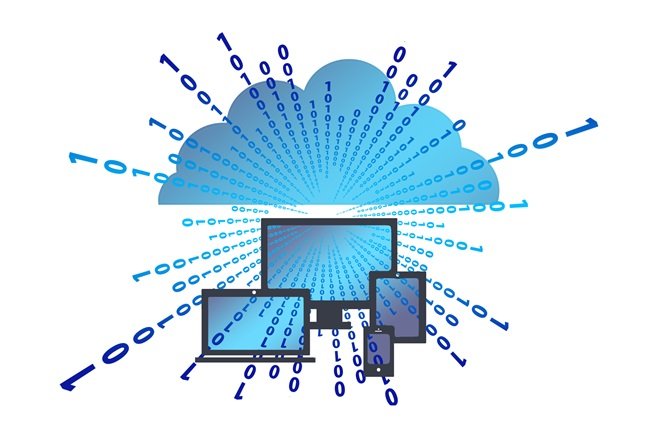A Complete Guide on Edge Computing
In today’s technological-driven era, the amount and pace of information produced by different devices have been dominating all sectors. Earlier, it was difficult to send all the data to centralized servers for processing due to restrictions in latency, bandwidth, and security. That’s why edge computing comes in. It has revolutionized the way we manage data processing.
In this article, we will delve more and share everything about edge computing, its usage, and other key components.
What is Edge Computing?

In a simple world, edge computing is referred as a distributed computing model which is used to process client-side data close to the data source where it is generated. It prevents moving data to a central server or cloud-based location.
Edge computing brings computing resources, data storage, and enterprise apps closer to where devices or people consume data or apps. The edge encompasses different data from sensors and machines to smartphones and other cutting-edge wearables.
The distributed computing model is not new and has already been used in remote offices, data center hosting, and branch offices.
What are the Key Benefits of Edge Computing?
Let’s understand and explore the key benefits of edge computing:
- Minimises Latency
Edge computing works by processing data locally. This can reduce the time it takes for data to travel to a central server and back, accelerating the response time and supporting in initiating real-time decisions. It is imperative for applications, such as industrial automation, autonomous vehicles, and augmented reality.
- Enhances Bandwidth Efficiency
There is no denying that edge computing minimises the amount of data that requires to be transported to the cloud. This will free up the bandwidth for other imperative tasks. This is helpful for applications installed in areas with restricted bandwidth availability.
- Strengthens Security and Privacy
Did you know that Edge pre-processes sensitive data before sending it to the cloud? This ensures data safety, security, and privacy. It is especially crucial for applications managing sensitive data on healthcare and finances.
- It is More Reliable
This type of computing system can function better when disconnected from the central cloud. It offers greater operational resilience and reliability. This is crucial for applications in remote areas or those that need uninterrupted operations without any hindrance.
- Scalability and Super Flexible
Edge computing data can be scaled by adding or removing edge devices whenever required. With the help of flexibility, you can easily change data volumes and processing requirements.
Key Applications of Edge Computing
Edge computing sources applications across different industries. It is reshaping the IT sector and have a look at the following examples:
- Internet of Things (IoT)
Edge computing is crucial in managing the huge amount of data produced by the Internet of Things Devices. It allows real-time analytics, AI, intelligent automation, and predictive maintenance.
- Manufacturing Sector
It supports and strengthens industrial facilities by optimizing the production process. It can help monitor equipment performance and carry out quality control measures for better functioning.
- Retail Sector
Edge computing can also be used in retail stores for providing customized customer experiences, managing inventory, and effective advertising.
- Development of Smart Cities
Edge computing also plays a pivotal role in developing smart cities and helping the locals and communities. It enhances real-time traffic management, monitors environmental factors, supports new-age waste management and collection strategies in metropolitan cities.
- Healthcare
Edge computing is beneficial in accessing remote patient monitoring, boosting medical image processing, and real-time data analysis for critical care.
- Content Delivering
It can also help boost the video streaming quality as it can catch content closer to users. This can reduce buffering and latency in no time.
What are the key Considerations of EC Deployment?
There is no denying that edge computing provides a range of benefits, there are key considerations to look for:
- Hardware & Software Requirements: Edge devices should be equipped with enough processing power, storage capacity, and security features to manage local data processing tasks.
- Network Connectivity: Safe and secure network connectivity between cloud platforms and edge devices is critical.
- Security Issues: Edge devices are distributed and thus more vulnerable to malicious activities and cyberattacks.
- Data Management: It is important to define strategies for data management, such as pre-processing, synchronization, and filtering between edge and cloud.
The Future of Edge Computing
The future of edge computing has a bright future as it will bring new advancements in technology. Here are some trends to watch:
- Integration with Artificial Intelligence (AI) and Machine Learning (ML): Edge computing will integrate with AI and ML, allowing powerful on-device analytics and real-time decision-making.
- Standardization and Interoperability: Standardization efforts will ensure seamless communication and data exchange between edge devices and platforms from different vendors.
- Increased Adoption of 5G Networks: The rollout of 5G networks with their high bandwidth and low latency will further accelerate the adoption of edge computing.
Wrapping Up
Edge computing is a new-age technology that has been shaping and improving data processing tasks. It brings computation closer to the source and offers tons of benefits including improved efficiency, security, and reduced latency.